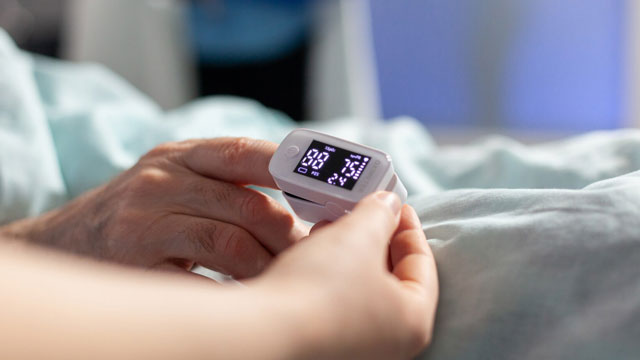comment
How will Edge and Fog reshape the digital landscape?
Edge and Fog computing lay the foundation for future innovation and digital transformation.
The digital landscape is a veritable breeding ground for innovation.
As Wired explains, the rate of technological innovation is faster than ever.
It doesn’t feel like an exaggeration to claim that someone’s inventing a new-fangled piece of technology–often using automation or AI–every split second.
We’ve been blessed with tools that foster innovation at rapid rates. The whole virtual space is a playground for inventive minds looking to maximise the full potential of their brainpower.
Certain pillars or standouts exist amid the sea of inventions and advancements. These game-changers lay the foundation for future innovation and digital transformation.
Two such pillars are Edge and Fog computing. We’ll discuss below how these two standout innovations are reshaping the digital landscape.
What is Edge Computing?
An emerging computing paradigm, Edge computing refers to a range of devices and networks close to the user.
Primarily, Edge focuses on data processing near its generation point, enabling quicker processes and higher volumes. This spearheads real-time, action-led results, offering many advantages compared to older standardised models since centralised computing power from an on-premise data centre isn’t required.
Edge Computing enables companies to improve physical asset management. Also, Edge equips organisations with the tools to generate innovative and interactive experiences for people.
Examples of Edge computing use cases include the following:
- Smart equipment data
- Automated Retail
- Self-driving cars
- Autonomous robots
The whole virtual space is a playground for inventive minds looking to maximise the full potential of their brainpower.
Edge components include
Below, we’ll highlight some primary components of Edge computing:
Edge devices
Edge computing is present in everyday devices like watches, smart speakers, and phones. These pieces of tech locally process and collect data while interacting directly with the physical world.
Other Edge devices include (provided they talk to the cloud and local compute):
- Point of Sales (POS) systems
- Internet of Things IoT devices
- Vehicles
- Robots
- Sensors

No network required
An Edge network doesn’t need to exist because it can be present on individual devices, routers, etc.
Say there’s a separate network. It would merely be another location in the user-cloud continuum. Here is where 5G thrives. It offers low-latency, high-powered wireless connectivity with exceptional cellular speeds. Autonomous drones, smart city projects, remote telesurgeries, etc., all stand to benefit from these innovations.
These capabilities are especially valuable when computing on-premises is too complex and costly, but you need high responsiveness levels (meaning the cloud is too far away).
On-premises infrastructure
Local systems and network connections can be managed by on-premises infrastructure. Examples include containers, routers, servers, bridges, or hubs.
Autonomous drones, smart city projects, remote telesurgeries, etc., all stand to benefit from these innovations.
The value of Edge Computing
Retail locations, factories, hospitals, and so on are where Edge computing happens in the modern landscape. They power critical systems and process highly sensitive data, demanding reliable and safe functionality.
Low latency is crucial for these organisations and institutions; the requisite solutions shouldn’t require a network.
Edge offers these various entities the exciting potential for business transformation across every function and sector, impacting all facets, from marketing and customer engagement to back-office operations and production.
Business functions become proactive when bolstered by Edge computing. They possess real-time adaptive capabilities, providing optimised experiences for people that otherwise never could have existed.
Edge blends the digital and physical worlds for businesses, offering the following advantages:
- Improving the retail experience by implementing algorithms and online data into brick-and-mortar settings.
- Creating situations where workers can learn from machines and establish full-fledged training systems.
- Enabling companies to run applications directly on-site with real-time and data requirements and critical reliability.
Companies embracing Edge computing can innovate rapidly, providing new services and products at high speeds.
Fog computing is decentralised. Its infrastructure places processing and storage components at the cloud’s edge where application users, sensors, and other data sources exist.
Fog Computing use cases
Here are some Fog Computing use cases:
Smart Cities
Automation on all fronts is the goal of any smart city, from traffic management to garbage collection.
Fog networking is most prominent in traffic management, as sensors are implemented at road barriers and signals to detect cyclists, pedestrians, and cars. The tech incorporates speedometers to measure speed and weigh the likelihood of collisions, employing cellular and wireless capabilities for data collection. Information is processed from the sensors and keeps signals green or red based on the analysis.
Smart Homes
Smart homes possess tech-controlled heating and ventilation systems (e.g., Nest Learning Thermostats, alarms, and programmable sprinklers and shades).
Alarms can be personalised through Fog networking. Also, events can be automated, like sprinklers turning on when specific temperatures are reached or at a particular time.
Edge computing is data computation occurring at the edge of a network. This is close to the specific place where data is created. Conversely, Fog computing is the mediator between the cloud and the Edge, helping with tasks such as data filtering.

Healthcare
Healthcare across all nations seek innovations to treat emergencies (e.g., a drop in vitals) in real-time. Data from wearables is one example of such technology. Also included are blood glucose monitors and health apps designed to detect bodily distress.
Fog computing ensures this data faces no latency issues since every second counts in critical situations, like if a patient suffers a stroke.